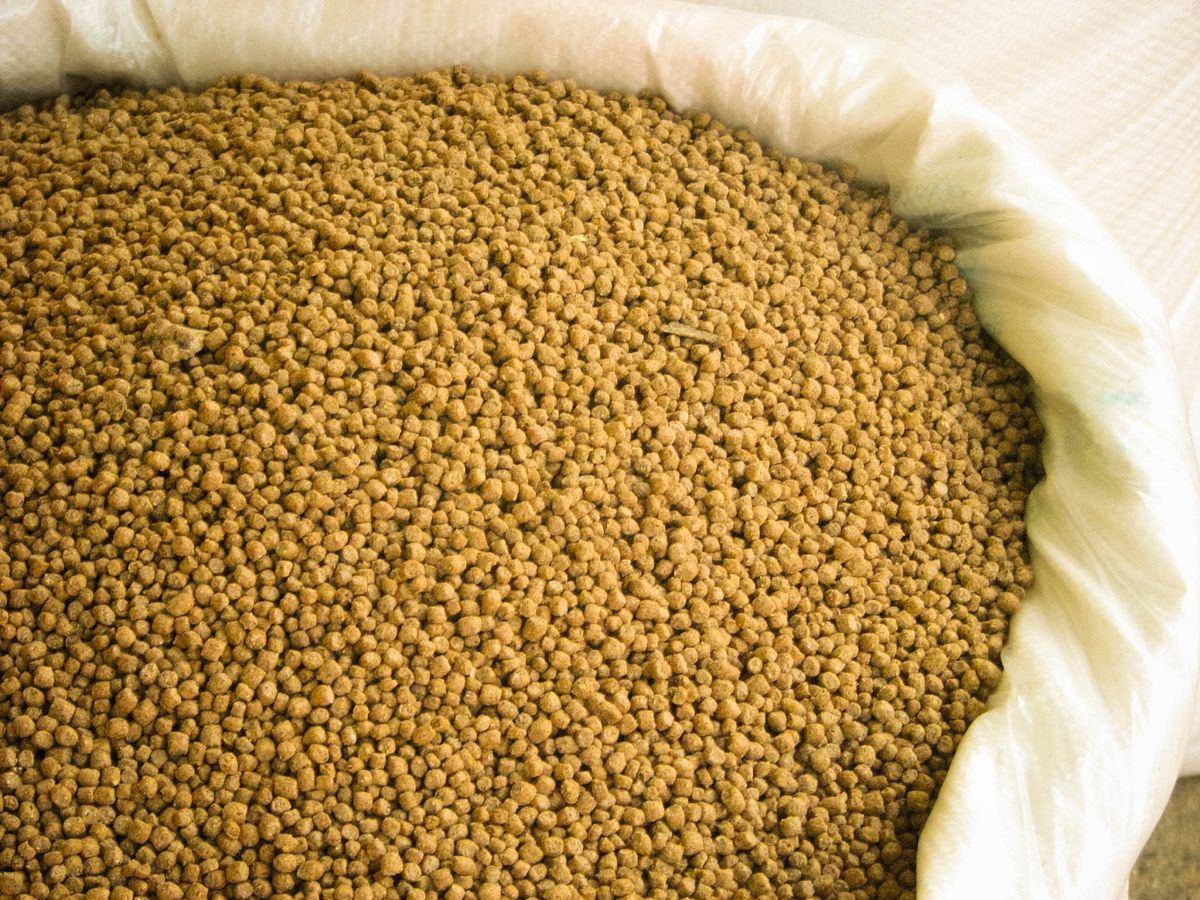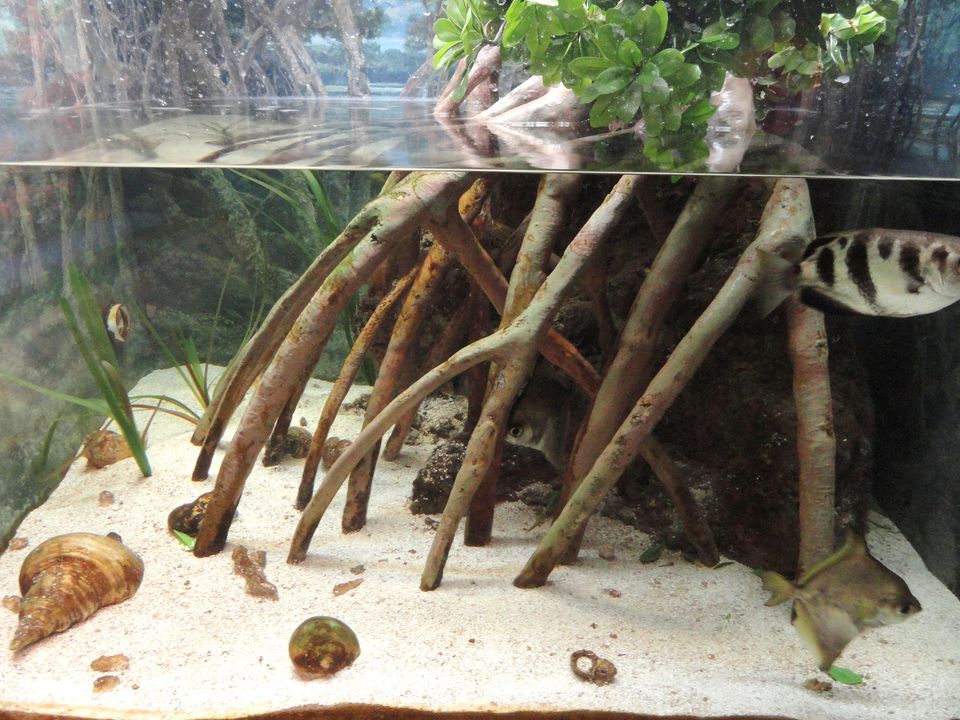What Do Fish Eat? and How to Properly Feed Your Aquatic Pets: Guide to Fish Nutrition
It's important to understand the nutritional needs of your aquatic pets and provide them with a balanced diet. But with so many different types of fish and so many options for fish food, it can be confusing to know what to feed your fish and how often. Here is the guide for you

As a fishkeeper, it's important to understand the nutritional needs of your aquatic pets and provide them with a balanced diet. But with so many different types of fish and so many options for fish food, it can be confusing to know what to feed your fish and how often. In this ultimate guide to fish nutrition, we'll explore the different types of fish food, the nutritional needs of different types of fish, and how to properly feed your aquatic pets to ensure their health and well-being.
What Do Fish Eat?
Fish are diverse and adaptable creatures that can survive on a wide range of diets, depending on their natural habitat and the resources available. In the wild, fish eat a variety of foods, including plants, algae, insects, crustaceans, worms, and other small animals. In the aquarium, fish can be fed a variety of commercial fish foods, as well as live, frozen, or plant-based options.
Types of Fish Food
There are many different types of fish food available, including flakes, pellets, wafers, sticks, and freeze-dried options. Each type of food has its own benefits and drawbacks, and it's important to choose the right type for your fish based on their size, species, and nutritional needs.
Flakes
Flakes are the most common type of fish food and are suitable for a wide range of fish. They are made from a mixture of ground-up ingredients, including fish meal, vitamins, and minerals, and are often fortified with additional nutrients. Flakes are easy to use and can be readily accepted by most fish, but they may not provide the complete nutrition that some species need.
Pellets
Pellets are another popular type of fish food and are similar to flakes, but they are formed into small, cylindrical shapes. Pellets are often more nutrient-dense than flakes, and they are also easier to measure and control the amount fed. However, some fish may be less likely to accept pellets, and they may sink to the bottom of the tank, where they may not be eaten by all fish.
Wafers
Wafers are a type of fish food that are made from a mixture of ground-up ingredients, similar to flakes, but they are formed into a flat, circular shape. Wafers are often used for bottom-dwelling fish, as they are less likely to float and are easy for these fish to access. They can be a good source of complete nutrition for some species, but they may not be suitable for all fish.
Sticks
Sticks are a type of fish food that are made from a mixture of ground-up ingredients, similar to flakes and pellets, but they are formed into a long, thin shape. Sticks are often used for larger fish, as they are easier for these fish to chew and digest. They can be a good source of complete nutrition for some species, but they may not be suitable for all fish.
Freeze-dried
Freeze-dried fish food is made by freezing and drying a variety of ingredients, including fish, crustaceans, and vegetables. Freeze-dried food is convenient and easy to store, but it must be rehydrated before feeding, and it may not provide the complete nutrition that some species need.
Nutritional Needs of Different Types of Fish
It's important to note that different types of fish have different nutritional needs, and it's important to choose the right type of food and feeding schedule to meet these needs. Some general guidelines to consider when feeding your fish include:
Feed a varied diet
Most fish do well on a varied diet that includes a mix of protein, carbohydrates, and fats, as well as vitamins and minerals. This can be achieved through a combination of different types of commercial fish food and live or frozen options.
Consider the size and species of your fish
Different types of fish have different nutritional needs, and it's important to choose a food that is appropriate for the size and species of your fish. For example, smaller fish may require a higher protein diet, while larger fish may need more carbohydrates.
Follow the recommended feeding guidelines
Each type of fish food will have specific feeding guidelines on the packaging, and it's important to follow these guidelines to ensure that your fish are receiving the right amount of nutrition. Overfeeding can lead to excess waste and poor water quality, while underfeeding can cause malnutrition and stunted growth.
Monitor your fish's appetite and condition
It's important to observe your fish's appetite and condition to ensure that they are receiving the right amount of nutrition. Healthy fish will have bright colors, clear eyes, and a good appetite, while unhealthy fish may have dull colors, cloudy eyes, and a poor appetite.
How to Properly Feed Your Fish
Proper feeding is an important aspect of fish care, and it's important to follow some basic guidelines to ensure that your fish are receiving the right amount of nutrition. Some tips for properly feeding your fish include:
Follow a consistent feeding schedule
It's important to establish a consistent feeding schedule and stick to it, as this can help to regulate your fish's appetite and metabolism. Most fish do well on one to three meals per day, depending on their size and nutritional needs.
Use a measured amount of food
It's important to use a measured amount of food and avoid overfeeding, as excess food can lead to excess waste and poor water quality. A good rule of thumb is to offer an amount of food that your fish can consume in two to three minutes.
Avoid overfeeding live or frozen foods
Live and frozen foods can be a nutritious and natural addition to your fish's diet, but it's important to avoid overfeeding these types of food. Excess live or frozen foods can lead to excess waste and poor water quality, and they may also carry the risk of introducing diseases or parasites to your tank.
Avoid feeding your fish only one type of food
While it's convenient to rely on a single type of fish food, it's important to avoid feeding your fish only one type of food, as this can lead to nutritional imbalances. It's best to offer a variety of different types of food to ensure that your fish are receiving a balanced diet.
Conclusion
Proper nutrition is an important aspect of fish care, and it's important to understand the nutritional needs of your aquatic pets and provide them with a balanced diet. By choosing the right type of fish food and following proper feeding guidelines, you can help to ensure the health and well-being of your fish and create a happy and healthy aquarium environment. Remember to consider the size and species of your fish, follow the recommended feeding guidelines, and offer a varied diet to ensure that your fish are receiving all the nutrients they need. With proper care and nutrition, your fish can thrive and provide years of enjoyment for you and your family.




